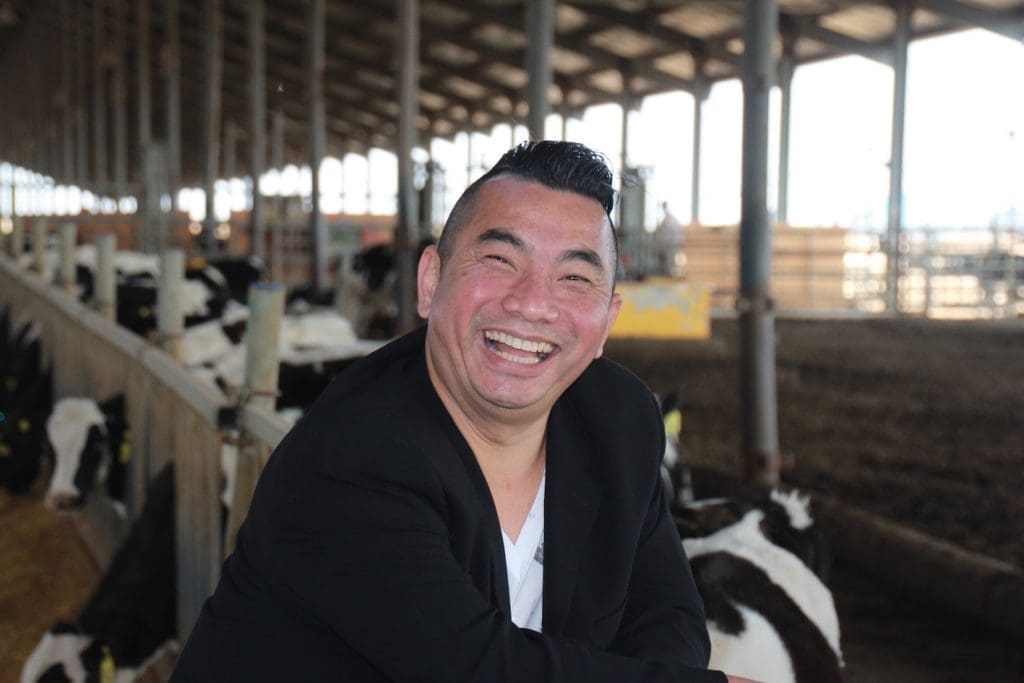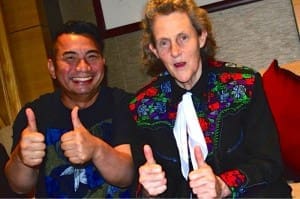This smiling face will be immediately recognisable to most Australians who have spent time visiting the Indonesian cattle industry.
Guntur Pribadi has been an integral member of the cattle operations developed in Indonesia over the past 25 years by Japfa, which in that time has grown to become one of the biggest importers and feeders of Australian cattle in the country.
While relations between Australia and Indonesia at a Government level have been more frosty than warm in recent years, at an industry level relationships could not be stronger, characterised by mutual trust, respect and personal friendships forged over many years of doing business together.
With a smile as wide as the Sydney Harbour Bridge and a booming laugh in response to every joke he hears (including many of his own!), Guntur is a popular and well known figure in the Indonesian and Australian cattle trade.
He has hosted countless tours of Australian cattle producers to Japfa’s three large Indonesian feedlots over the years and has visited Australia numerous times himself to inspect the many cattle properties that supply Japfa’s feedlots with more than 100,000 cattle a year.
In many ways the industry is lucky to have Guntur because his early career had nothing to do with cattle at all.
Guntur grew up in what he refers to as the “small town” of Solo in Central Java. Where a small town in Australia might mean 400 people, in this case it is a regional city of no less than three million people.
After graduating from university with a degree in civil engineering, Guntur gained employment with the rapidly growing Japfa company in its concrete development department, which was busy at the time building large poultry operations.
In his capacity as a civil engineer Guntur was introduced to cattle in 1991 when he worked with Japfa to build a small quarantine facility and cattle feedlot for a joint venture project with AustAsia’s Edgar Collins. The pilot project involved a trial near Surabaya importing and feeding Australian Brahman cattle for 90 days.
“We built the first cattle shed and I really liked working with the cattle,” Guntur recalls.
Guntur returned to designing and building poultry sheds for Japfa until 1995 when the company built the first of its three large feedlots, the 25,000 head Bekri feedlot in Sumatra.
Guntur has been intrinsically involved with the development and growth of Japfa’s cattle operations ever since, and has risen to a high level of seniority in the company’s cattle division.
He said he was instantly fascinated by the challenge of importing and feeding cattle and took every opportunity to research and learn and understand what it took to successfully feedlot Australian cattle in Indonesia.
After a long period as head of the company’s commercial beef feedlots in Indonesia, he is now focusing his attentions on China where he has overseen the development of Japfa’s Holstein feedlot near Dongying for the past three years.
In his role running Indonesia’s beef feedlots Guntur travelled to Australia many times, visiting cattle stations to learn and understand how Australian cattle are raised and sleeping in stock camps along the way.
The boy from the intensely populated island of Java in Indonesia admits that he found the vast expansive plains of northern Australia “very different” when he first arrived.
Not only was he surprised to see so much land with so few people, he also initially wondered how many cattle there really were as well, given how few they saw from the roads they first travelled.
“People would tell us they have 70,000 cattle, then you go there to their station and you don’t see a single one.
“You wonder are they telling us the truth?
“Then they bring the helicopters and suddenly there are thousands of cattle.
“We say: “Oh yeah, now we see them!”
One of the bigger challenges Guntur faces in China is finding staff prepared to take on a career in cattle production.
Many young people in regional areas of China are being drawn to the attractions of working in the city, and regard farming as “not something to be proud of”, he said.
Employment is also high meaning young people typically have plenty of choice as to where they work.
As a result there is a lack of local farming knowledge and staff turnover is high.
To combat this issue Guntur has introduced an induction program to demonstrate the significant career opportunities that exist throughout Japfa’s Asia wide agribusiness network, and he has also established long-term training opportunities for workers.
Last year, he sent two local staff members to the US for a one-year livestock management course at Ohio University. Both have since graduated and are now part of the operation’s senior management team.
“My dream is to send two people every year for 10 years, so in that time I will have 20 good people,” he said.
If beef cattle exports from Australia to China grow as many predict they will, Guntur Pribadi will once again be a central figure in a large developing market for Australia’s cattle industry. With experienced and knowledgeable people like Guntur actively involved in developing the new trade, the path towards strong partnerships is already well paved.





HAVE YOUR SAY